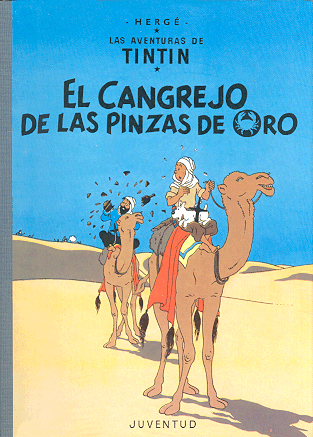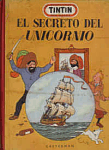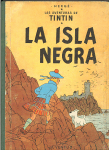Spanish is the most
widely spoken of the Romance languages, both in terms of number
of speakers and the number of countries in which it is the
dominant language. Besides being spoken in Spain, it is the
official language of all the South American republics except
Brazil and Guyana, of the six republics of Central America, as
well as of Mexico, Cuba, the Dominican Republic, and Puerto Rico.
Additionally it is spoken in the Balearic and Canary islands, in
parts of Morocco and the west coast of Africa, and also in
Equatorial Guinea. In the United States it is widely spoken in
Texas, New Mexico, Arizona, and California (in New Mexico it is
co-official with English), in New York City by the large Puerto
Rican population, and more recently in southern Florida by people
who have arrived from Cuba. A variety of Spanish known as Lad mo
is spoken in Turkey and Israel by descendants of Jews who were
expelled from Spain in 1492. All told there are about 350 million
speakers of Spanish.
Pronunciation and
usage of Spanish naturally vary between countries, but regional
differences are not so great as to make the language
unintelligible to speakers from different areas. The purest form
of Spanish is known as Castilian, originally one of the dialects
that developed from Latin after the Roman conquest of Hispania in
the 3rd century A.D). After the disintegration of the Roman
Empire, Spain was overrun by the Visigoths, and in the 8th
century the Arabic-speaking Moors conquered all but the
northernmost part of the peninsula. In the Christian reconquest,
Castile, an independent kingdom, took the initiative and by the
time of the unification of Spain in the 15th century, Castilian
had become the dominant dialect. In the years that followed,
Castilian—now Spanish—became the language of a vast empire in
the New World.
Spanish vocabulary
is basically of Latin origin, though many of the words differ
markedly from their counterparts in French and Italian. Many
words beginning with f in the other Romance languages begin with
h in Spanish (e.g., Ilijo—son, hilo—thread). The Moorish
influence is seen in the many words beginning with al- (algodón—cotton,
alfombra—rug, ahitohada—pillow, alfiler—pin) . As in
British and American English, there are differences in vocabulary
on the two sides of the ocean-patata (potato) is papa in Latin
America, while melocotón (peach) is durazno. Spanish spelling is
based on generally consistent phonetic principles, and reflects
better than most languages the way a word is pronounced. The
consonants b and v are pronounced alike, the sound falling
somewhere between the two sounds in English (boca—mouth,
voz—voice). The letter z, and the letter c before e and i, are
pronounced as a voiceless th in Castilian, but more like s in
southern Spain and Latin America (zapato—shoe, ciudad—city).
The letter j, and the letter g before e and i, are pronounced
like the English h (jardin—garden, general—general), though
in Spain it is more guttural than in Latin America. The hard g
sound is represented by g before a, o, and u (gato—cat), but gu
before e and i (seguir—to follow). The combination ch is
pronounced as in English (muchacho—boy), but is considered a
separate letter of the Spanish alphabet, occurring after c.
Similarly ll, pronounced as in the English 'million" in
Spain but as y in America (calle—street), comes after 1 in the
alphabet; ñ , pronounced ny (pequeño—small), comes after n;
and rr, a rolled r (correr—to run), comes after r. The h is
always silent (hombre man).
The stress in
Spanish likewise follows a consistent pattern, falling on the
next to last syllable in words ending in a vowel, n, or s, and on
the final syllable in words ending in other consonants.
Exceptions to this rule are indicated by an acute accent (árbol—tree,
corazón—heart).
English words of
Spanish origin include cargo, siesta, sombrero, mesa, hacienda,
patio, armada, guerrilla, junta, plaza, canyon, rodeo, pueblo,
adobe, vaizilia, armadillo, tornado, embargo, and bonanza.

 FIRST SPANISH EDITION
CASTERMAN 1952
FIRST SPANISH EDITION
CASTERMAN 1952  FIRST SPANISH EDITION
JUVENTUD 1961
FIRST SPANISH EDITION
JUVENTUD 1961